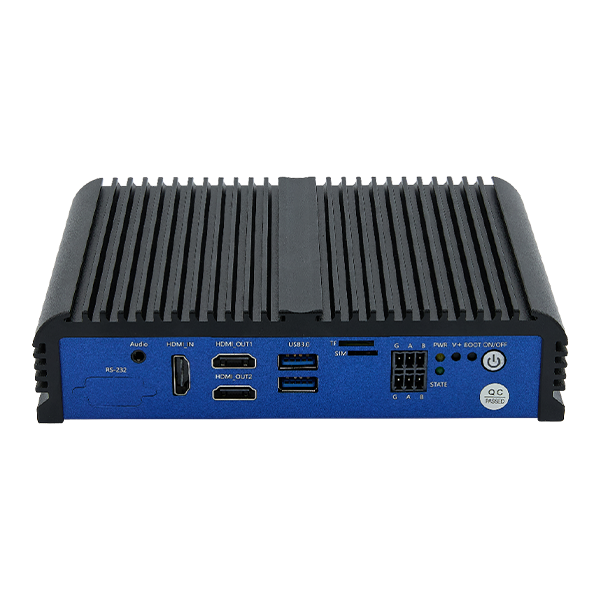Finding the right industrial computer manufacturer directly affects your equipment’s reliability, long-term performance, and cost control. With so many suppliers offering similar products, it’s easy to overlook key differences that matter in real use. This practical guide focuses on the critical factors—application requirements, customization options, quality standards, and supplier evaluation methods—to help you filter out the noise and identify manufacturers that actually fit your needs.
Define Your Needs
Application Requirements
Every business must start by identifying the exact tasks their industrial computers will perform. Emerson highlights that customizing solutions to specific application needs boosts machine performance and productivity, even in tough environments.
Companies that clearly define their requirements—such as ruggedness, processing power, and connectivity—gain a competitive edge.
The table below shows how different industries set unique requirements for their operations:
| Industry Use Case | Key Needs | Outcome |
|---|---|---|
| Car Wash Automation | Ruggedness, water resistance | Improved reliability and speed |
| Manufacturing Plants | Fanless cooling, multi-video support | Enhanced performance and uptime |
| Cleanroom Operations | High processing, flexible mounting | Zero failures, clean operation |
| Agricultural Weighing | IP65 protection, VESA mount | Reliable long-term use |
Budget and Cost
Budget shapes every decision. Recent cost analysis reports show that companies must review IT spending benchmarks, including capital spending and device costs, to make smart choices.
Compliance and Certifications
Compliance protects both product quality and business reputation. Industrial Computer Manufacturers must follow strict validation processes, such as Computer System Validation (CSV), to meet industry standards.
Where to Find Industrial Computer Manufacturers
Trade Shows and Expos
Trade shows and expos connect buyers with leading Industrial Computer Manufacturers. These events have become more valuable since the pandemic, with attendee and exhibitor satisfaction rising by nearly 20 points.
Most exhibitors say that meeting high-quality visitors matters more than the number of visitors. Attendees feel most satisfied when they discover new, innovative suppliers and products.
Exhibitors report higher satisfaction when they meet existing customers and launch new products. Organizers now focus on attracting fewer but higher-quality visitors and disruptive, smaller manufacturers.
Discovering new solutions remains the top reason attendees value expos.
Professional Networks
Professional networks offer trusted recommendations for Industrial Computer Manufacturers. Industry forums, such as Reddit, allow users to share real-world experiences and insights.
Buyers can ask questions, read reviews, and learn from others who have faced similar challenges. These networks often reveal hidden gems that do not appear in standard directories.
Manufacturer Websites
Manufacturer websites provide the most direct information about products and services. Buyers can review technical specifications, download brochures, and request quotes.
Many sites feature case studies and testimonials that show real-world results. Visiting these websites helps buyers verify certifications and assess the company’s expertise.
Evaluating Industrial Computer Manufacturers
Product Quality
Buyers should always check the product range. Leading Industrial Computer Manufacturers offer panel PCs, rackmount systems, and embedded computers. These products must handle harsh environments and deliver consistent performance.
Quality assurance depends on strong metrics and testing. The table below shows how manufacturers measure and maintain high standards:
| Quality Assurance Metric Category | Description | Examples Relevant to Industrial Computer Products |
|---|---|---|
| Process Metrics | Measure production efficiency and identify bottlenecks | Yield, throughput, cycle time |
| Product Metrics | Assess final product quality and customer satisfaction | Defect rates, scrap rates, customer complaints |
| Maintenance Metrics | Monitor equipment performance to ensure reliability | Downtime, planned vs unplanned maintenance ratio |
| Supplier Quality Metrics | Track quality of incoming materials and components | Incoming quality, supplier defect rates |
Manufacturers use vibration, thermal cycling, and environmental testing to prove durability. Digital twins and predictive analytics help spot problems before they affect customers.
Customization Options
Every industry has unique needs. Industrial Computer Manufacturers must provide custom solutions for different sectors.
Modern factories use AI, 5G, and advanced software. These technologies require computers that can adapt and integrate easily.
Manufacturers now offer custom design, built-to-spec computers, and flexible workstations. The table below highlights key customization services:
| Aspect | Details |
|---|---|
| Customization Services | Custom design, built-to-spec computers, monitors, and workstations tailored to unique industrial needs. |
| Protection Standards | IP65, IP66, IP67; NEMA 4, 4X, 6; hazardous area certifications. |
| Engineering & Support | In-house engineering team, dedicated project managers, end-to-end project support. |
| Manufacturing Location | Designed, engineered, manufactured, and assembled in the USA. |
| Product Range | Small form factor computers to purge-protected workstations for extreme conditions. |
| Lead Times & Order Flexibility | Short lead times; supports both low-volume specialized and large-scale orders. |
| Trusted Industries & Clients | Aerospace, Amusement, Automation, Chemicals, Food & Beverage. |
Buyers should look for manufacturers who can deliver both standard and custom solutions quickly.
Support and Warranty
Strong support and warranty services protect buyers from costly downtime. Local support teams respond faster and solve problems quickly.
Manufacturers use advanced analytics to track warranty claims and repair times. The table below explains how these methods improve service:
| Evidence Aspect | Description | Impact on Support and Warranty Factors |
|---|---|---|
| Warranty Claims Data Analytics | Use of labor and parts data, simulation, and predictive models to analyze repair times and failure modes. | Optimizes technician dispatch and parts stocking, reducing service costs and improving satisfaction. |
| Statistical Methods | Bayesian networks, anomaly detection, survival analysis, machine learning. | Correlates warranty claims with product quality and service efficiency, enabling predictive scheduling. |
| KPI Monitoring | Dashboards track claim turnaround, repair success, cost per claim, and SLA compliance. | Identifies bottlenecks, improves productivity, and benchmarks performance. |
| Real-World Case Studies | Predictive analytics enabled early defect detection and cost reduction. | Demonstrates financial impact and benefits of analytics-driven management. |
| Predictive Analytics | Forecasts claim volumes and costs using historical data and product lifecycle parameters. | Enables preemptive inventory positioning and budgeting accuracy. |
Manufacturers who invest in these tools offer better after-sales service and lower warranty risks.
Reputation and Reviews
A strong reputation signals trust and quality. Buyers should check customer satisfaction ratings, return rates, and complaint records.
Manufacturers use key performance indicators to track and improve service. The table below lists important KPIs:
| KPI Name | Description | Formula / Measurement Approach |
|---|---|---|
| Customer Satisfaction | Measures satisfaction via surveys, often using Likert scales. | Percentage of customers rating ‘very’ or ‘extremely’ satisfied from total survey responses. |
| Customer Return Rate | Tracks repeat customers. | (# of return customers / total # of customers) × 100 |
| Return Merchandise Authorizations (RMA) | Reflects dissatisfaction through returns and refunds. | (# of RMAs / # of orders delivered) × 100 |
| Customer Reject Rate | Measures defective parts rejected by customers. | (# of rejected parts / total # of parts shipped) × 100 |
| Perfect Order Percentage | Tracks orders shipped on time, complete, damage-free, and accurately documented. | Product of percentages of on-time, complete, damage-free, and accurate documentation orders × 100 |
Manufacturers use real-time monitoring and sentiment analysis to catch problems early. This approach keeps quality high and customers happy.
Comparing and Selecting Right Industrial Computer Manufacturer
Requesting Quotes
Requesting quotes from several suppliers gives buyers a clear view of the market. This process creates valuable data that helps companies spot pricing trends and compare supply chain efficiency.
- Platforms now offer real-time quote responses and reporting tools.
- Buyers can use these insights to make faster, smarter decisions.
- Data from multiple quotes highlights component availability and helps manage risks.
- Integration with planning systems ensures buyers align supply with demand, reducing extra inventory.
- Analytics from quote data can reveal ways to cut costs and improve supplier collaboration.
Communication and Responsiveness
Fast and clear communication sets top suppliers apart. Real-time alerts and color-coded dashboards help teams spot problems right away.
- Automated notifications send updates to the right people without delay.
- Shared dashboards let everyone see the same information, which speeds up decisions.
- Quick responses to questions or issues show a supplier’s commitment to service.
- Efficient communication reduces downtime and keeps projects on track.
Shortlisting and Trial Orders
After comparing quotes and communication, buyers should create a shortlist of the best suppliers. A trial order tests product quality and service before making a big commitment.
- Trial orders reveal how well a supplier meets deadlines and handles support.
- Buyers can use this step to check if the supplier’s products fit their needs.
- Feedback from trial orders helps buyers make the final choice with confidence.
Conclusion
A practical guide to finding industrial computer manufacturers offers more than just selection tips—it provides a framework for making sound, evidence-based decisions. From clarifying technical needs to evaluating service and reliability, each step contributes to reducing risks and ensuring long-term system performance. In a crowded and uneven market, structured guidance remains essential for identifying the right partners.
Choosing the right partner starts with clear needs and smart research. Follow these steps for success:
- Define your requirements.
- Search using trusted resources.
- Evaluate quality, support, and reputation.
- Compare quotes and test with trial orders.











